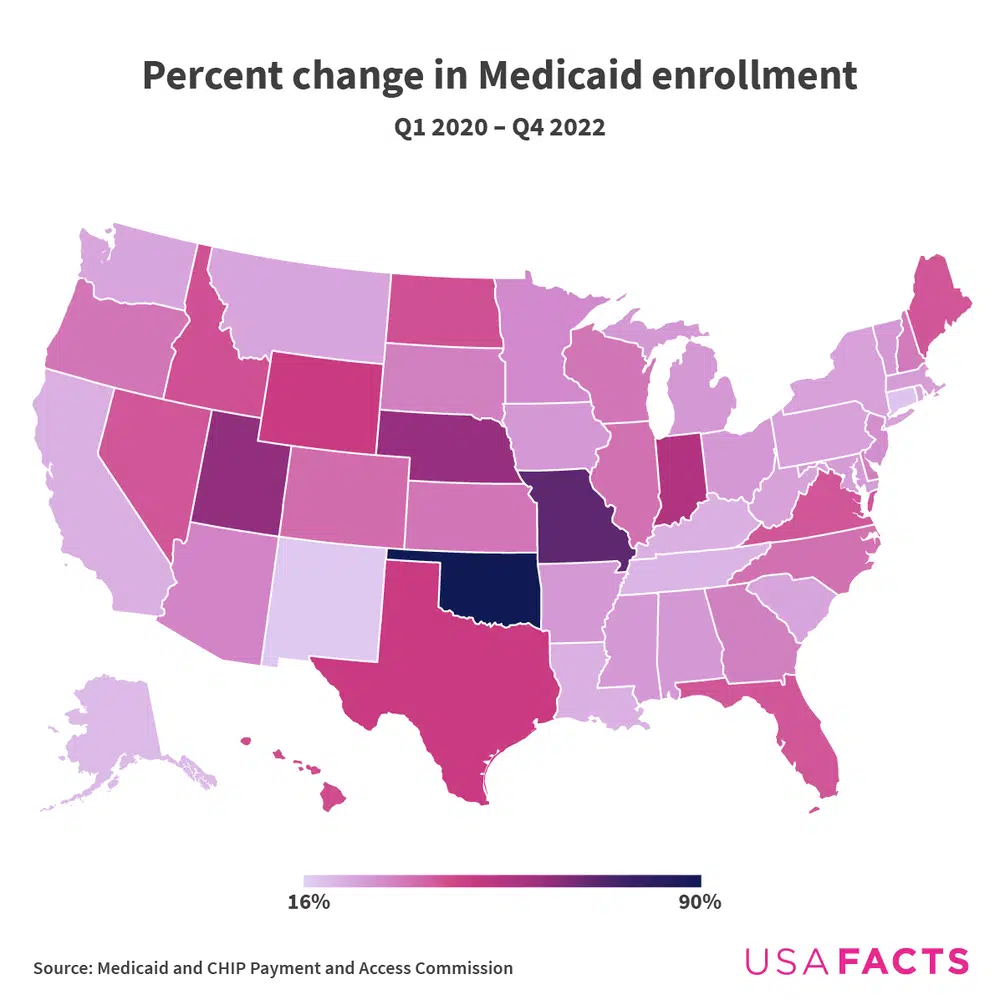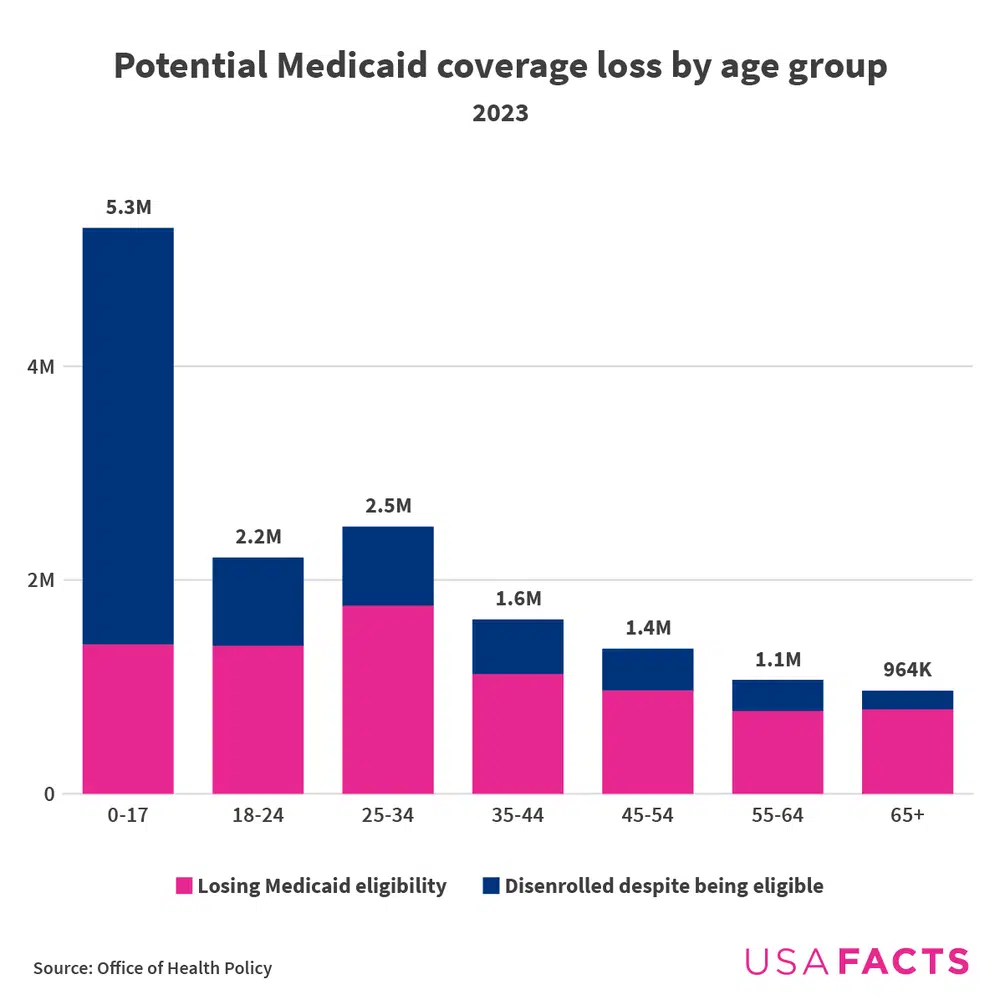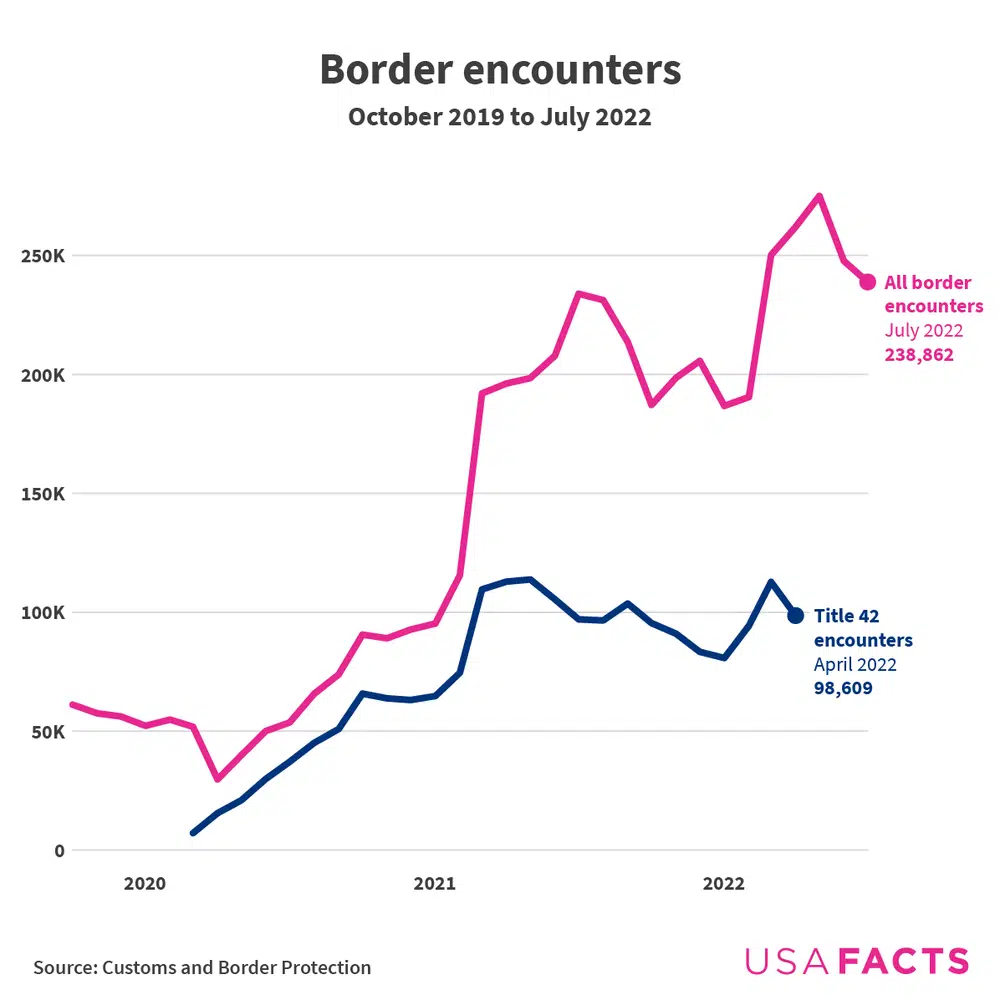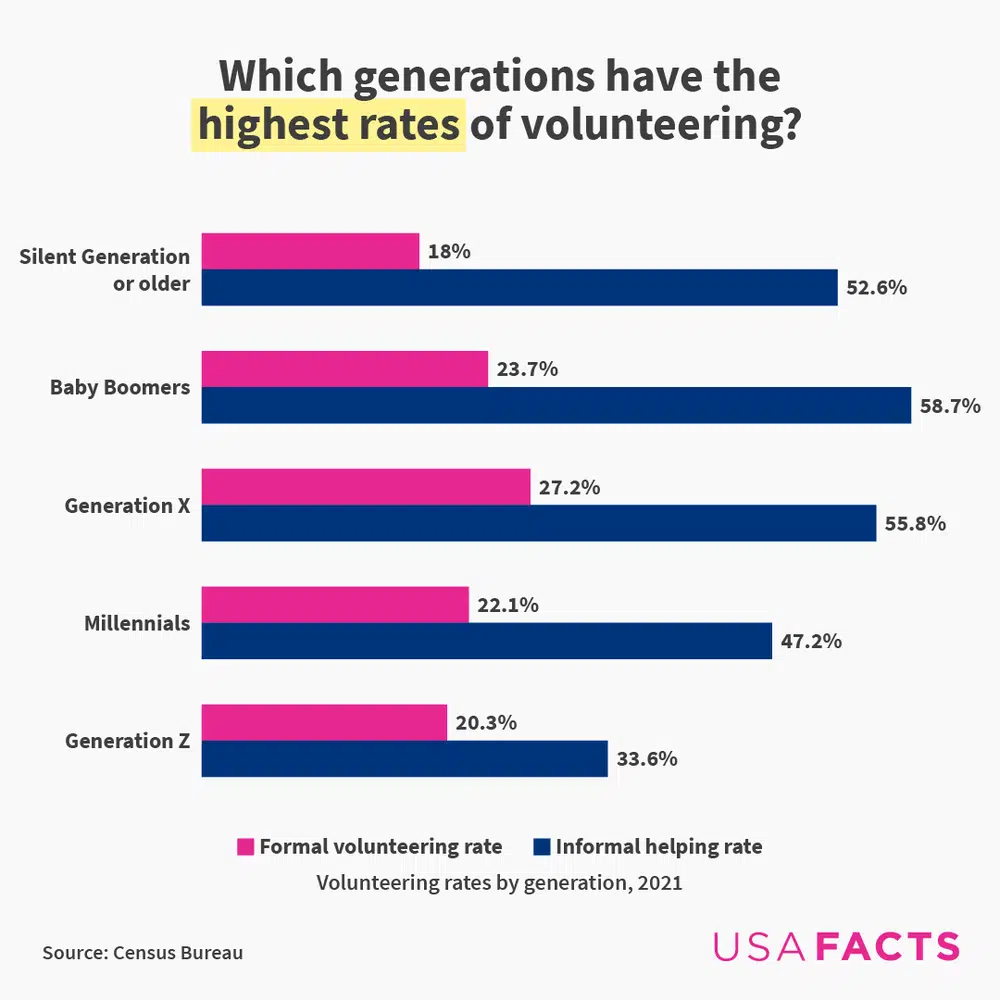Why Medicaid enrollment rates will drop
Pandemic policies permitted Medicaid enrollment to grow by about 20 million people from 2020 to 2022. But one of those policies, continuous enrollment, ended on March 31. Continuous enrollment meant people who might have lost coverage due to income changes or other factors, automatically remained in the program when they otherwise wouldn’t have. Millions of people could lose coverage, even temporarily, despite still being eligible. Here’s how the numbers grew over the pandemic and who the coming changes could impact.
- As of January 2023, over 93 million people were enrolled in Medicaid and the Children’s Health Insurance Program, sometimes called CHIP. CHIP recipients will also face enrollment issues.

- Oklahoma had the largest jump in Medicaid enrollment during the pandemic, up 90%. Missouri had the second highest, up 70%.
- The Office of Health Policy projects that 17.4%, approximately 15 million people, could lose their Medicaid benefits. This includes 8.2 million who are now ineligible. Another 6.8 million people could lose coverage at least temporarily despite still being eligible.

- Medicaid rollbacks could disproportionately affect certain age groups, races, and income levels. Children are especially vulnerable to cuts (nearly 4 million children will temporarily lose access and need to reapply), as are Latino and Black recipients.
- Most people losing Medicaid eligibility earn incomes above the federal poverty level, currently $30,000 annually for a family of four. Another 3.8 million people living in poverty could lose benefits at least temporarily.
See more about changes coming to Medicaid.
How Title 42 changed border encounters
The Department of Health and Human Services declared a public health emergency for COVID-19 in 2020. That emergency expired May 12 and, with it, the invocation of the legal provision known as Title 42. The federal government used Title 42 to expel migrants at the border in response to the pandemic. This measure aimed to reduce the risks of COVID-19 among immigration facilities and border agents, but it also had consequences for asylum seekers. What does the data say about how Title 42’s affected immigration over the past three years?

- Federal law enforcement had 3.8 million encounters with migrants at the Canadian and Mexican borders between March 2020 and April 2022. Fifty-one percent of the people in these encounters were denied entry to the US under Title 42.
- Before Title 42, migrants at the border were allowed to state whether they feared persecution or wanted to seek asylum from their home country. Those found to have a credible fear would have a hearing and potentially receive asylum. Anyone not granted asylum status would be removed. Under Title 42, migrants were sent to Mexico or their home country without being questioned about their reasons for being at the border.
- Migrants from Mexico, Honduras, Guatemala, and El Salvador accounted for 64% of all border encounters but 93% of all Title 42 cases.
- A district court ruling in November 2020 exempted unaccompanied children from Title 42. The Centers for Disease Control and Prevention made the exemption official in February 2021.
- The number of asylum cases filed dropped by 56% from about 196,000 in fiscal year 2020 to 87,000 in fiscal year 2021. This decrease reduced the backlog slightly. However, total pending immigration cases increased by 30% from the end of fiscal year 2020 to March 2022.
Learn more about Title 42's impact on US borders.
Data behind the news
To mark the end of the COVID-19 public health emergency, revisit this visualization, published almost exactly one year ago, of how the nation has lost people of various ages, races, and regions to the virus.
The Writers Guild of America strike has stretched into week three. Here’s background on how common labor strikes are in the US, plus the numbers on how union memberships have changed over 40 years.
Test yourself with the latest weekly fact quiz and see how your score measures up.
One last fact

Over half of Americans 16 and older (124.7 million people) provided help to their neighbors between September 2020 and 2021. More than 60 million of those people formally volunteered with an organization. Millions of other informally volunteered in their communities, including bringing someone groceries, providing a ride to a medical appointment, and dozens of other helpful activities.







